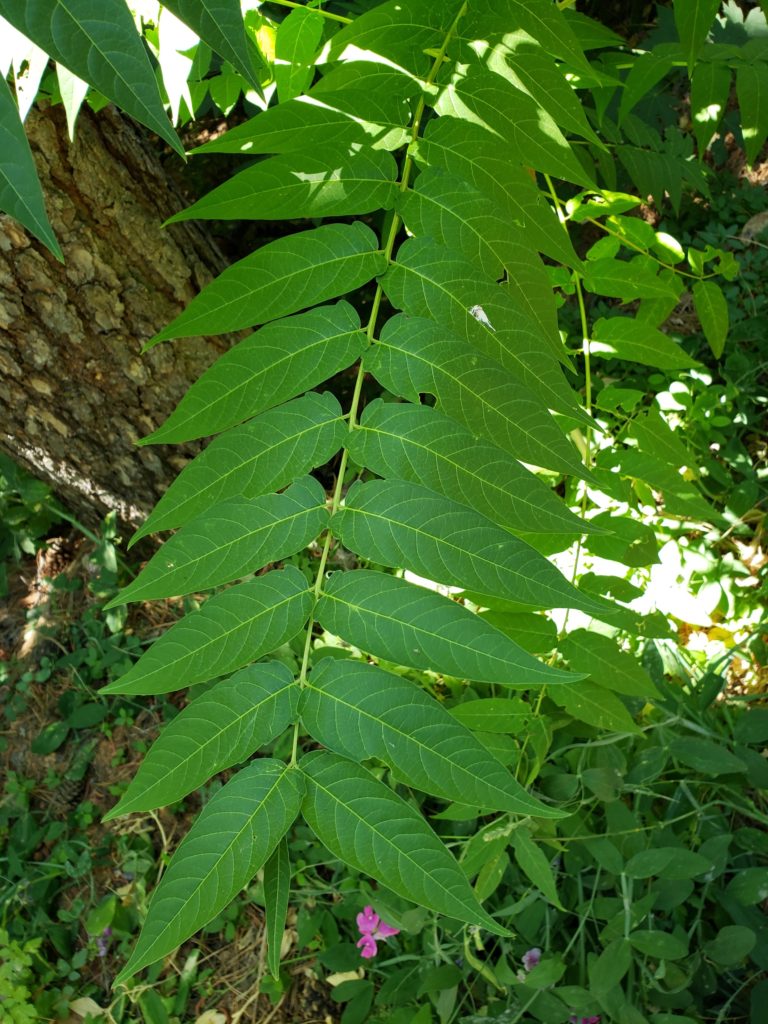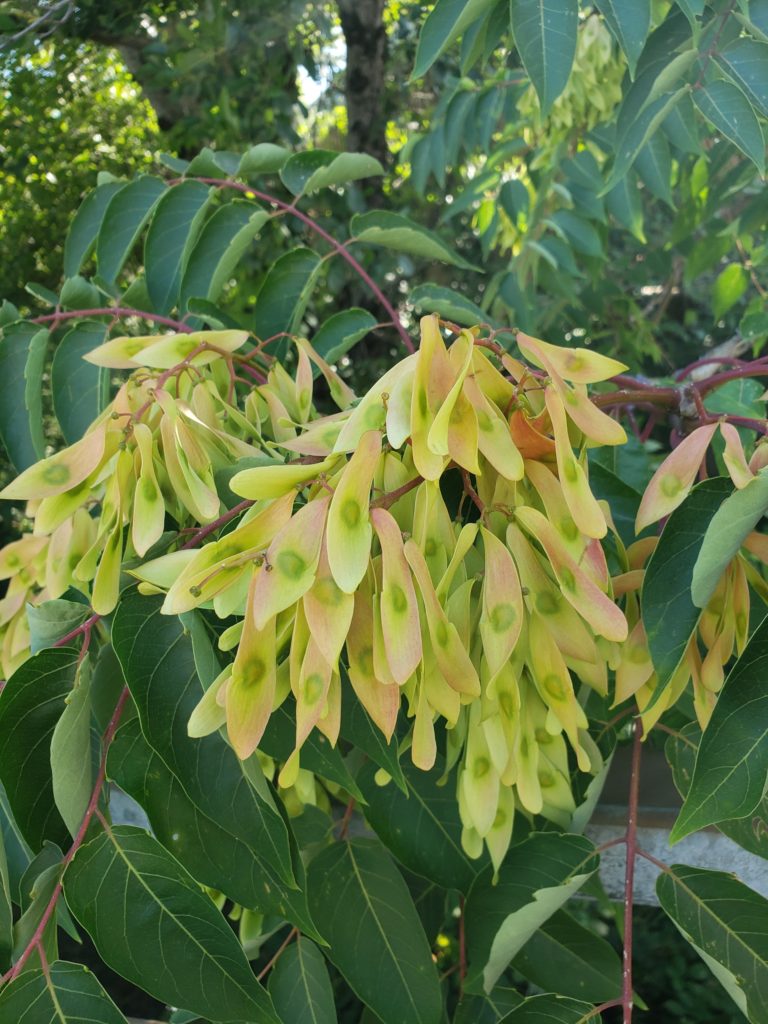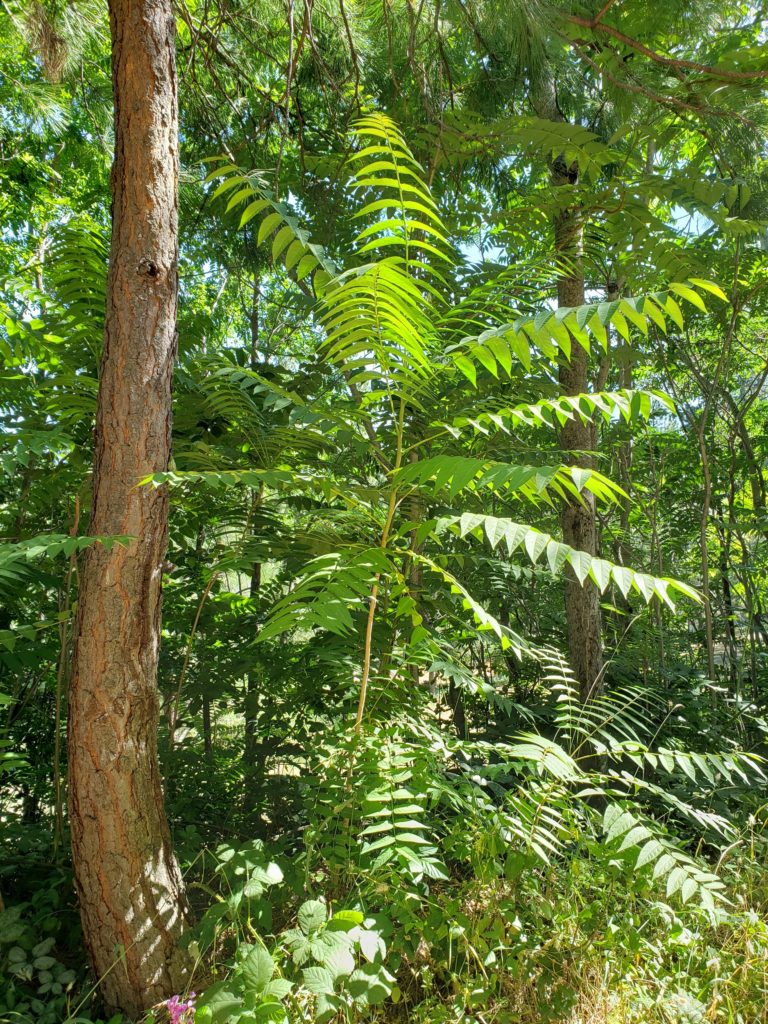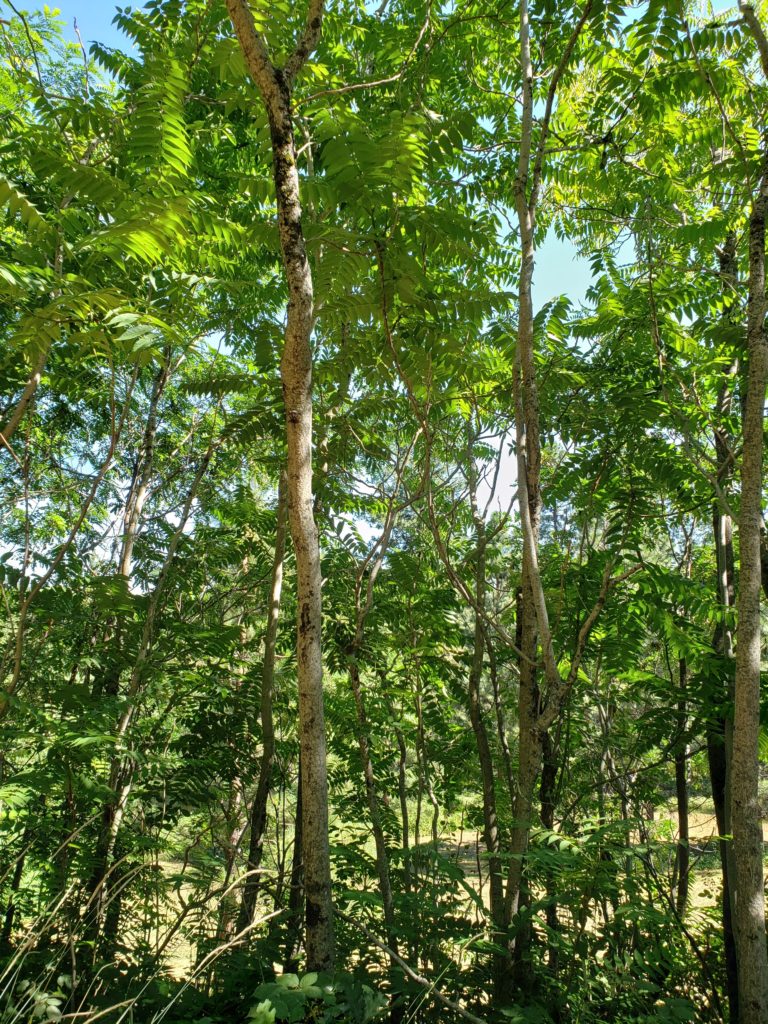There’s a tree around here that will soon be bearing seeds in colorful papery looking seed pods. It’s called the tree of heaven (Ailanthus altissima). But it should be called the tree of hell. It smells awful, really awful, and spreads prolifically mostly by roots, making it hard to remove. It’s a non-native tree and can readily fill in areas of land that are disturbed by logging, fire, land clearing, or other disturbance.
It’s called tree of heaven because it grows fast and looks like it’s reaching for the heavens. But the attraction stops with the name. I call it tree of hell and I’m not alone.
They regretted bringing it here
It’s native to Taiwan and China and was imported to the US three times. The first two times, the trees went to Northeastern cities as a new, interesting ornamental tree in the late 18th century. It was touted as an attractive shade tree. This was when importing plants from far-away places was an attractive thing to do. Because a plant was new and foreign it just had to be better.
But the tree quickly fell out of favor with owners and horticulturists due to the foul smelling foliage and male flowers, and the fact that it started coming up everywhere in people’s yards and in walkways and roads.
The third introduction was by the Chinese coming to California during the Gold Rush. It’s thought that it held cultural significance to them and medicinal value. So that’s why we have it here.
It grows anywhere, in moist soil, dry soil, full sun, and handles significant shade. Now it has naturalized in much of the US.
And it spreads—some by seed but mostly by root sprouts. The roots spread widely even when a tree is very young to set itself up for survival. When the main trunk is injured, cut, or killed, those roots send up copious sprouts.
Even when the tree is suffering from damage during drought, the roots take the water from the stem and transport it to the roots. When there is enough water the roots send up sprouts to continue growing closer to a new water source. It’s a good survival tactic for sure, but it helps it be tenacious and to spread and out compete with our native plants.
Here’s how to spot it

It’s an upright grower, especially when young. For the botanically versed, it has opposite pinnately compound leaves. That is, each leaf is comprised of a long stem with leaflets arranged on opposite sides of the stem. The leaflets are ovate shaped, meaning that they are oblong with a pointed tip.
And they stink!
The trees are dioecious, which means they’re either male or female with the flowers being either male or female. The female flowers are greenish and not showy.
Right now is a good time to identify the tree of hell because their showy seed pods are ripening. They start green, turn to tan, then reddish later in the summer as they ripen. They are starting to get showy now.
The male flowers, also quite smelly, attract a lot of pollinators: bees, flies, beetles, and other insects. But especially flies; they like the smell.
The trees may be easily confused with Northern California black walnut. The leaves are similar, but smaller. Or they could be confused with black locust, a tree that tends to grow in groups and has opposite pinnately compound leaves. But the leaves are smaller and the tips are rounded. And neither smells.
Like all pests, it grows too easily

The female trees pump out a lot of seeds—up to 325,000 each year. Seeds are only mildly airborne; typically less than 300 ft. from the mother tree and only last about a year in the soil.
It’s the root sprouting that enables the tree to take up residence into increasingly large patches.
It runs rampant into the countryside
The tree of hell’s tenacious qualities allows it to fill in in areas that have been disturbed by logging, fire, and land clearing. In some areas of North America it has become a terrible pest plant displacing native plants and difficult to eradicate.
If you have this tree growing on your land you might want to remove it, especially if it’s in a small space. I see quite a few young trees on people’s land and even in front yards. The sooner you take it out the better.
Here’s how to remove it
When you try to remove it, that voracious root system sends up many, many new sprouts!
So here’s what you can do. First pull out any small trees that you can by hand and with the help of a weed wrench-type tool.

most likely a root sucker.
Root sprouting will happen prolifically, so spray the sprouts with Round-up or other brand of glyphosate. (Be super careful about hitting other plants accidentally.) Glyphosate goes into plants through the leaves, moves within the plant only, and doesn’t affect surrounding plants. You’ll need to repeat applications to translocate the poison through the whole root system. Sprouting will occur anywhere along the root system, so check all around for sprouts, repeatedly.
For larger a tree, you can cut it down, at least so that it doesn’t drop this year’s seeds. Then paint or spray glyphosphate onto the trunk’s cut surface and all sprouts that occur after. Before flowering and during summer is the best time to control this invasive plant.
More details for a strategy for larger trees is outlined in this article at ecolandscaping.org.
I’m sure, that since the Chinese brought this tree with them that it has very redeeming qualities. And I’m sure, considering its common name, that in its native habitat that it does very interesting things in its ecosystem, and that it’s beautiful (except for the smell!).
But like so many plants that have been imported, it has become a pest, having the potential to obstruct the establishment of native plants and the animals that rely on them.
Do you have this tree on your land? Think about eradicating it. Sorry, but it’s a smelly job!

